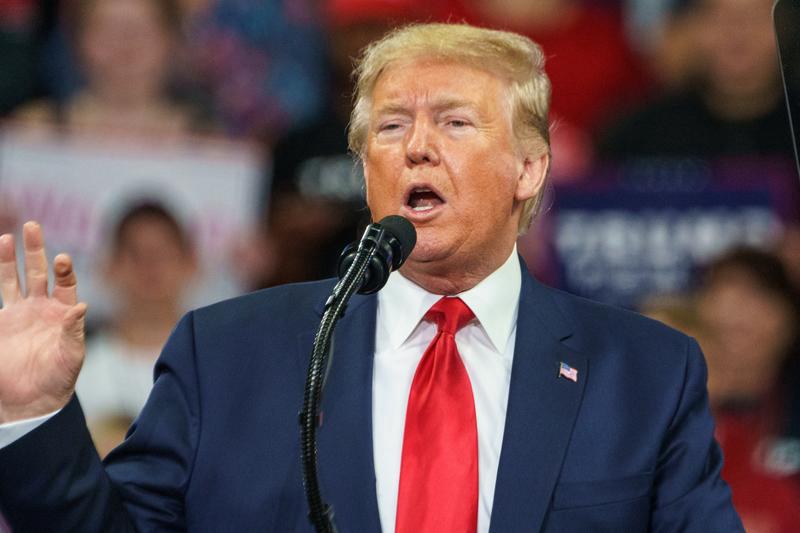President-elect Donald Trump is exploring the use of recess appointments to expedite the installation of his Cabinet nominees, including the controversial selection of former Representative Matt Gaetz as Attorney General. This approach would allow Trump to bypass the traditional Senate confirmation process, raising concerns among lawmakers and constitutional scholars.
The atmosphere in Congress among Republicans after Donald Trump announced former Rep. Gaetz (R-Fla.) as his nominee for attorney general was perfectly captured by Rep. Mike Simpson (R-Idaho), who exclaimed, “Are you sh–tin’ me?”
On Wednesday, numerous Republicans expressed their astonishment and doubts about the Senate’s willingness to confirm Gaetz next year. However, there are whispers circulating on Capitol Hill and within conservative circles suggesting that Trump is indeed serious and may utilize extraordinary measures to bypass the Senate and appoint his contentious choice regardless.
Understanding Recess Appointments
The U.S. Constitution grants the president the authority to fill vacancies during the Senate’s recess. Historically, this power was intended to ensure the government remained functional when the Senate was not in session. However, its application has evolved, often becoming a tool for presidents to circumvent Senate opposition to their nominees. A 2014 Supreme Court ruling clarified that such appointments are permissible only during recesses of ten days or longer.
Trump’s Demand to Senate Leadership
In a recent social media post, Trump asserted that any Republican senator aspiring to leadership must agree to allow recess appointments. He emphasized the necessity of filling positions promptly, stating, “We need positions filled IMMEDIATELY!”
This demand pressures Senate Republicans to facilitate a process that would enable Trump to install his nominees without the standard confirmation hearings and votes.
Trump suggested he might dismiss Congress to make appointments as his first term came to a close and there are worries he might actually act on this plan in his second term. He has also urged the Senate to allow him to make recess appointments to prevent Democrats from delaying the confirmation process.
Controversial Nominees and Senate Response
Trump’s Cabinet selections have sparked debate, particularly the nomination of Gaetz for Attorney General. Gaetz, a staunch Trump ally, has faced legal and ethical scrutiny, including a House Ethics Committee investigation, which Republicans are refusing to make public. His nomination has elicited mixed reactions from Senate Republicans. Senate Majority Leader John Cornyn said, “Obviously, I don’t think we should be circumventing the Senate’s responsibilities.” He said he is committed to ensuring that the nominees are processed effectively to place them in roles where they can carry out Trump’s agenda. The exact method for achieving this is yet to be determined. He added that it is important for the committees to conduct confirmation hearings as is customary.
Other nominees, such as Pete Hegseth (a FOX News host) for Secretary of Defense and Tulsi Gabbard for Director of National Intelligence, have also drawn criticism for their lack of qualifications and past statements. The potential use of recess appointments to install these individuals has heightened concerns about the erosion of the Senate’s “advise and consent” role.
Mechanics and Implications of Recess Appointments
For a recess appointment to occur, the Senate must be in recess for at least ten days. Typically, the Senate holds pro forma sessions during breaks to prevent such appointments. However, a recess appointment becomes possible if both the House and Senate agree to adjourn. This strategy would allow Trump to temporarily install his nominees, who could serve without confirmation until the end of the next Senate session.
The use of recess appointments in this context raises questions about the balance of power between the executive and legislative branches. While the president has the authority to make such appointments, doing so to bypass the Senate’s confirmation process for high-profile positions could set a contentious precedent.
Suspending Congress temporarily to circumvent Senate resistance to his nominees and make recess appointments would theoretically grant Trump unbounded authority to fill all positions in the executive branch. This move would align with his ambition to act like a dictator from the very first day.
This notion seems absurd because it truly is absurd. No president has ever wielded this sort of power before, and executing such a plan would not only be challenging but might also be unwise.
To start, a majority of House Republicans would need to support a resolution to suspend the chamber. With an anticipated majority of 221 Republicans against 214 Democrats, they would have to maintain the support of all but four members of their party. If this strategy is intended to push Gaetz through the Senate, will the significant number of House Republicans who strongly oppose him agree to this plan?
Historical Context and Precedent
Previous presidents, including Bill Clinton and George W. Bush, have utilized recess appointments, though typically not for top-level Cabinet positions. The 2014 Supreme Court decision limited the scope of this power, emphasizing the importance of the Senate’s role in the confirmation process. Trump’s current strategy tests these boundaries, potentially reshaping the dynamics of executive appointments.
Looking Ahead
Representative Jamie Raskin, a Democrat from Maryland and a former professor of constitutional law, remarked that it is an unresolved constitutional issue regarding the legitimacy of recess appointments that are facilitated by specifically convening and adjourning Congress for that reason.
As Trump prepares to assume office, the unfolding situation regarding his Cabinet nominations and the potential use of recess appointments will be closely monitored. The outcome could have significant implications for the functioning of the federal government and the interplay between the executive and legislative branches.











